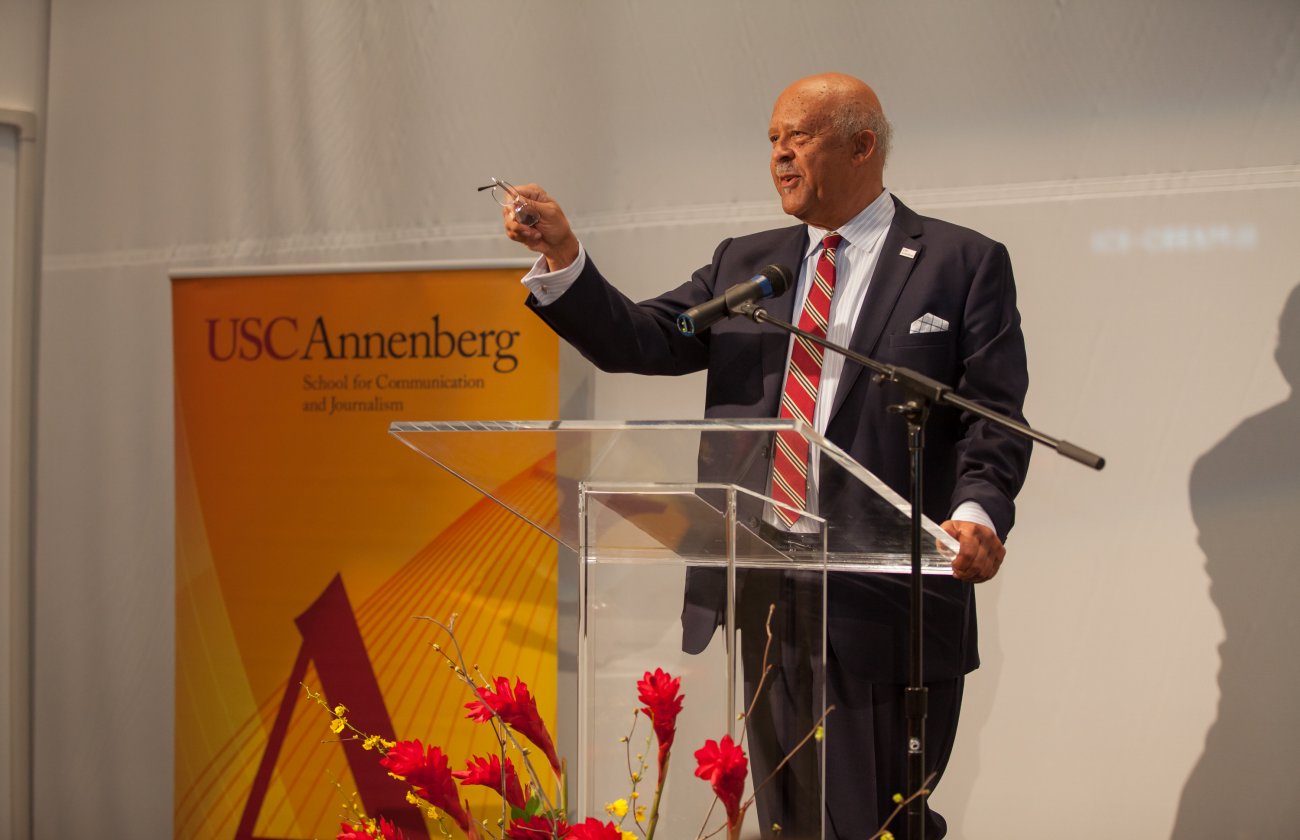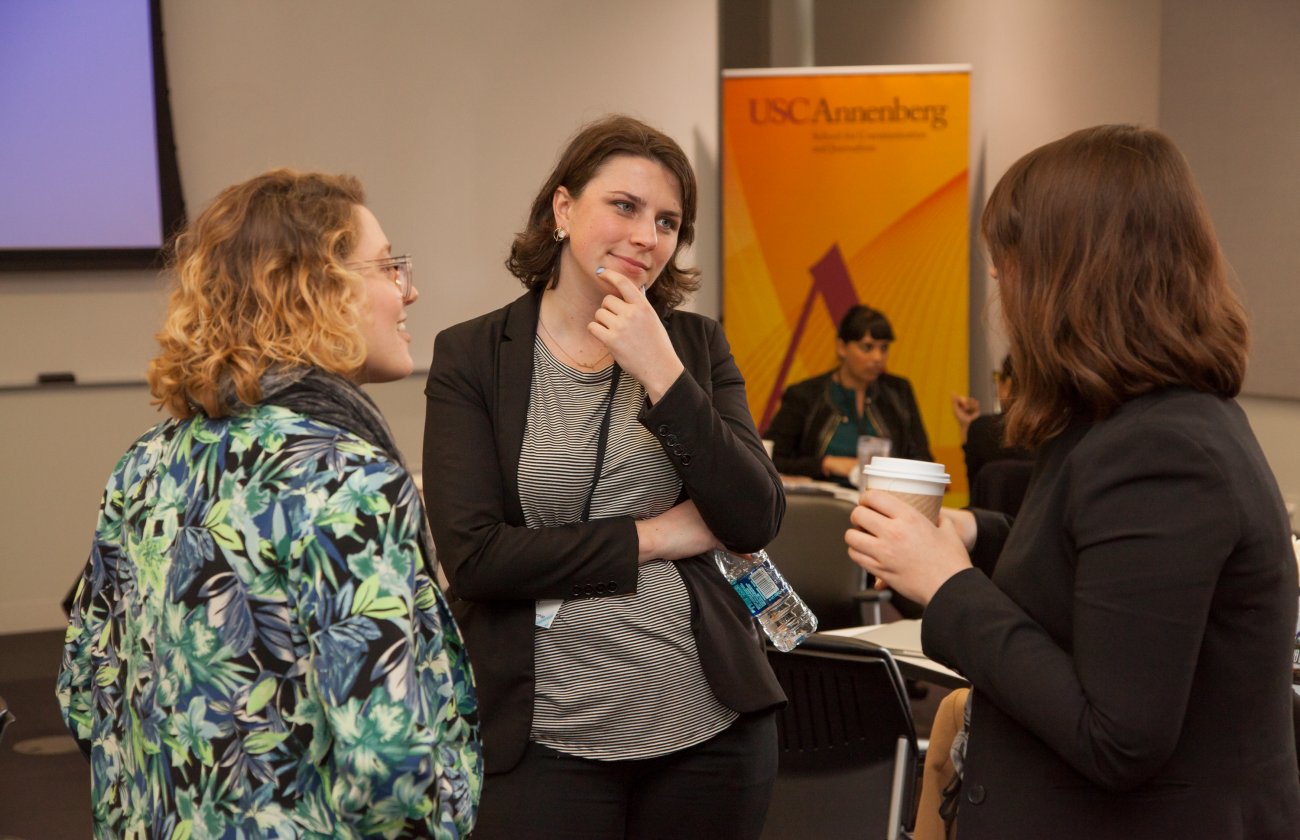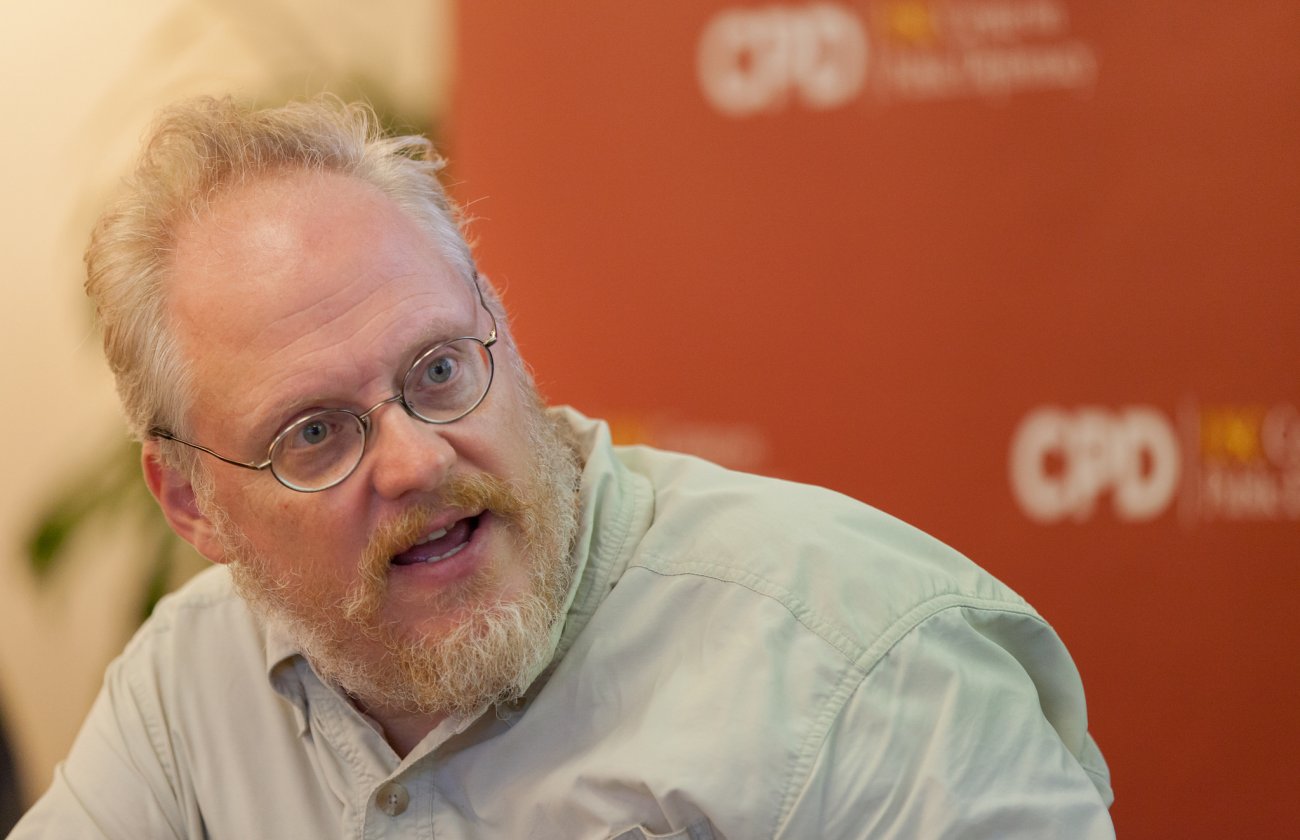By Michael Juliani
USC Annenberg hosted a presentation Tuesday about the June meeting between President Barack Obama and Chinese President Xi Jinping at The Annenberg Retreat at the Sunnylands estate for the second installment of the 2013 Journalism Forum series.
Matching the overflow audience that came for the forum’s first installment last week, members of the USC Annenberg faculty, students – including several from mainland China -- and reporters from area media outlets came to hear a panel presentation that focused on U.S.-China relations.
University Professor Geoffrey Cowan, director of USC Annenberg’s Center on Communication Leadership & Policy and president of The Annenberg Retreat at Sunnylands, and Clayton Dube, director of the USC U.S. – China Institute, a program of USC Annenberg, talked about the importance of the Sunnylands summit with help from Archey Lee, a graduate student studying Public Relations at USC Annenberg. The June Sunnylands summit took place when Edward Snowden’s leak of information related to the National Security Agency became public, and Cowan said the leak created an atmospheric backdrop for the meeting between the leaders of the world’s two most powerful nations.

In a PowerPoint presentation, Dube provided various data focusing on the relationship between the United States and China. The two nations, he showed, dominate global significance in terms of gross domestic product and military spending, as well as in carbon dioxide emissions. The countries also do a tremendous amount of business with each other. “The U.S. and China matter,” Dube said.
Dube ran through news coverage from the day after the summit to display how American and Chinese media differed in their focus. Some of the biggest U.S. newspapers featured the summit as their top stories. The Los Angeles Times, for example, had a front-page picture of the two leaders walking in the 104-degree heat on the Sunnylands estate in Rancho Mirage, Calif. Time magazine featured Sunnylands in its writing about the summit. Some of the American media coverage even had incorrect reporting, according to Cowan. The New York Times printed a story that said First Lady Michelle Obama would be attending, which Cowan said was never the case. “It created an issue,” Cowan said. “’Why [didn’t she go]?”
Much of the Chinese media coverage had a uniform approach – some of the country’s biggest newspapers actually had an identical layout. Archey Lee’s research of posts on China’s microblogging server Weibo showed that many people in China speculated about the more sensational elements of the summit, such as what the leaders would eat, how they would greet each other and about why First Lady Michelle Obama chose not to attend. “People predicted that not many concrete outcomes would come from the summit,” Lee said. “And they were right.”

Outside the summit, protesters with several different agendas showed up to demonstrate against the Chinese president, including people from the Free Tibet movement and Vietnam. Counter-protestors, i.e. China supporters, arrived also and raised tensions outside in the over-100-degree heat. In the end, the Chinese president took different routes to arrive at and leave the estate, not coming into contact with the protesters.
Cowan said that with more than 2,500 students coming from mainland China, USC has the unique position of analyzing U.S.-China relations with the involvement of students from both cultures. He said that recent studies have shown there is diminishing trust between the two cultures, and Dube’s presentation highlighted different avenues of the two cultures’ relationship to each other.
“Each of us is more negative toward each other than the rest of the world is to us,” Dube said. The U.S.-China Institute was established by USC President C.L. “Max” Nikias when he was provost in 2006, and in the fall of 2011 the Annenberg School for Communication and Journalism took over the program, offering specific programs looking into public diplomacy, new Chinese media and economics reporting.
In his introductory remarks, Dean Ernest J. Wilson III said that because of the studies indicating diminishing trust between the U.S. and China, the school wanted to “figure out what the broader Annenberg family can do to improve trust.” He added that a handful of USC Annenberg professors speak Mandarin. “International studies are a very good thing,” Cowan said, stressing that USC Annenberg and The Annenberg Retreat at Sunnylands will continue to cultivate and understand the relationship between the United States and China.
Related :









